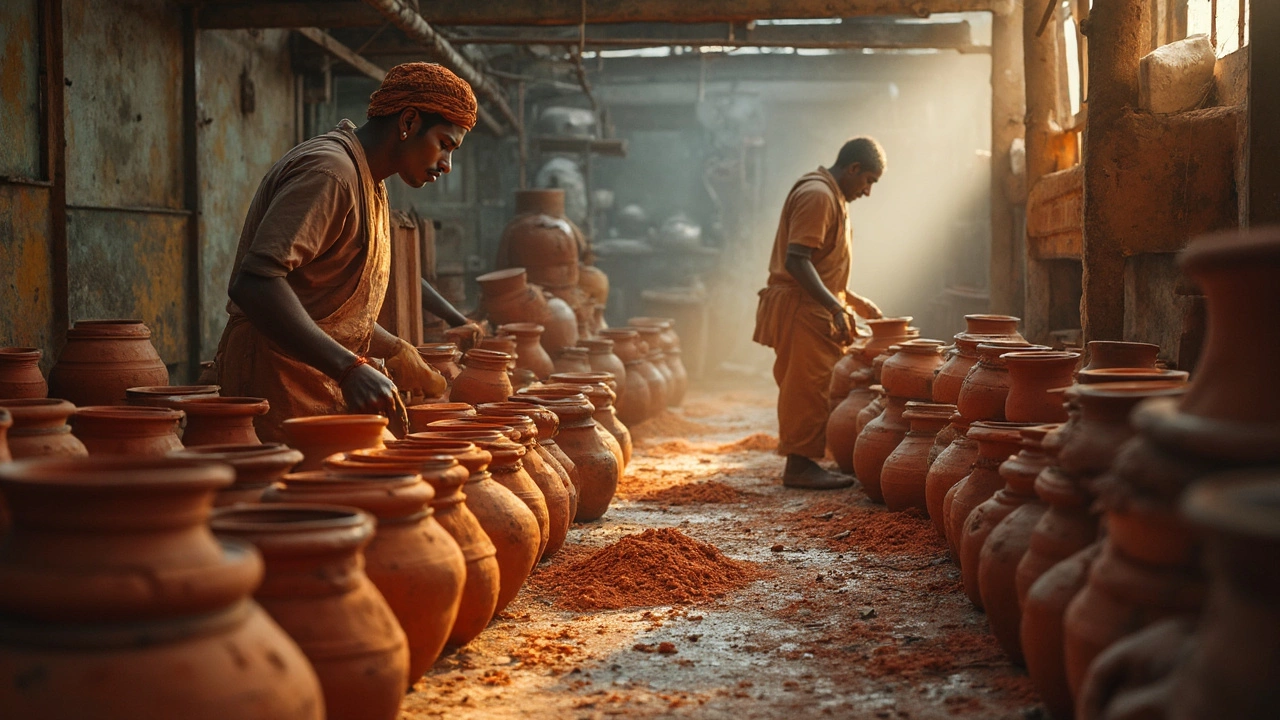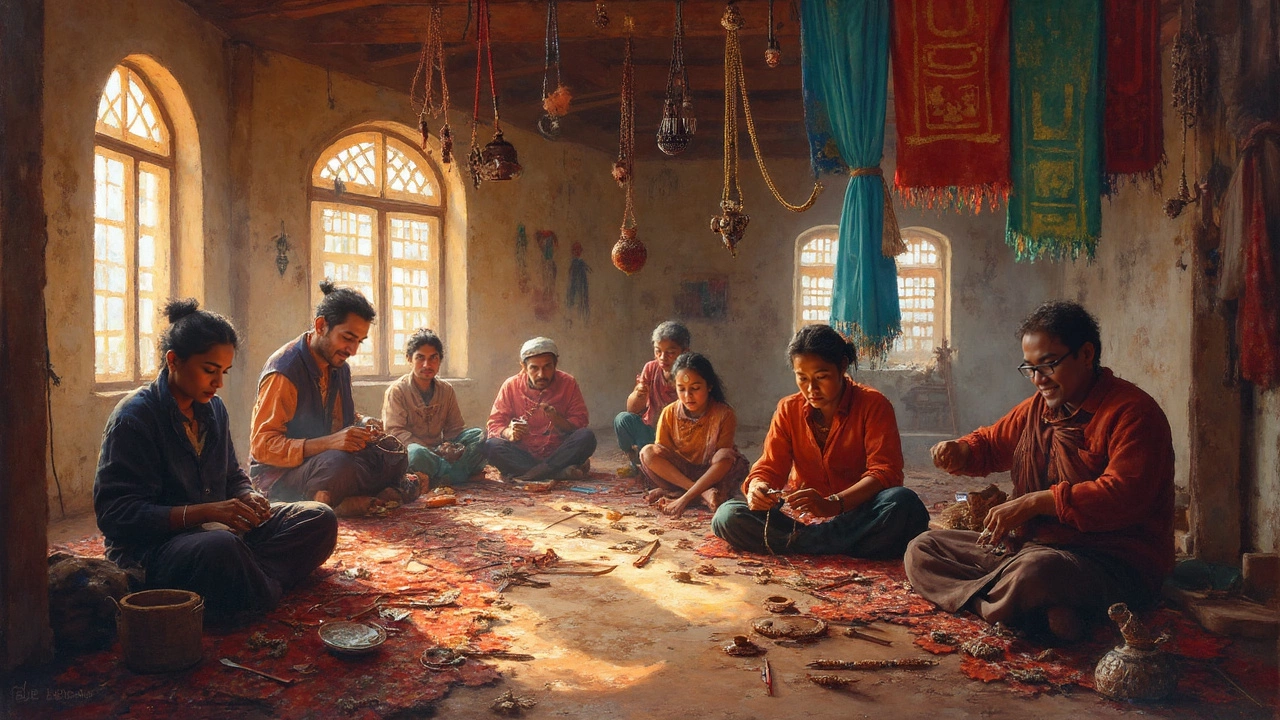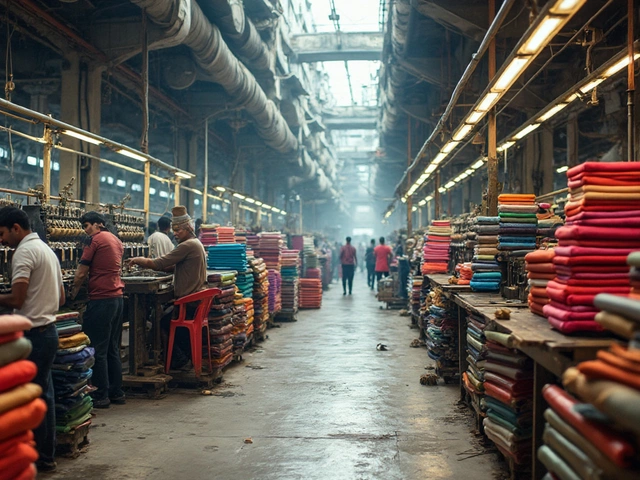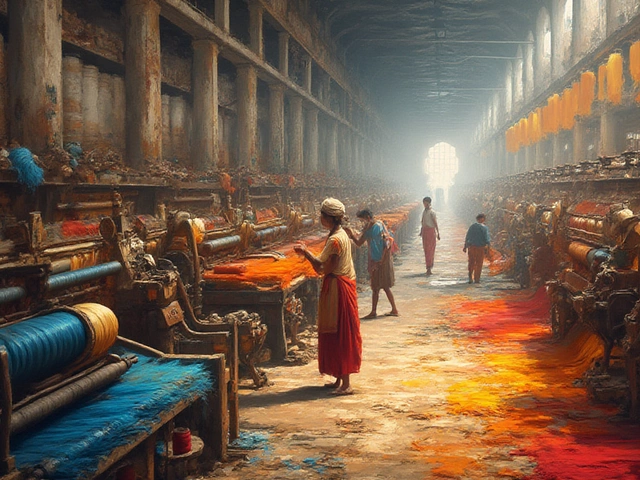Small scale production might sound a bit niche, but it’s a fascinating and incredibly important part of manufacturing. It often sparks creativity and innovation, offering unique opportunities that larger productions can't. But if you're considering diving into this world, you need to know that there are two primary types you might encounter: craft production and batch production. Both have their unique traits and things might get a little tricky if you don’t know which path suits you better.
Craft production is more of an artisanal approach. Think about those handmade items you see at local markets or custom-tailored clothing—that's craft in action. It's often about creating unique, personalized products tailored to the customer's needs. While it's fantastic for creativity, it can also be time-consuming and may not suit large volume orders or strict deadlines.
- Introduction to Small Scale Production
- What is Craft Production?
- What is Batch Production?
- Benefits and Challenges of Each
- Which Type is Right for Your Business?
- Tips for Success in Small Scale Manufacturing
Introduction to Small Scale Production
Small scale production is like the hidden gem of the manufacturing world. It often gets overshadowed by massive factories churning out products by the millions, but in reality, small scale production has its own charm and advantages. Whether it’s about creating unique pieces or quickly adapting to new trends, small scale production plays an essential role in our economy.
What actually is small scale production, though? In simple terms, it's about making goods on a smaller scale compared to mass production. You won't see sprawling assembly lines here. Instead, you’ll find more personalized and flexible production methods. Think of your local bakery vs. a commercial bread factory; the attention to detail and customizability is what stands out.
One of the coolest things about small scale production is its ability to cater to niche markets. These setups are perfect for businesses that don't require huge quantities but focus on quality and uniqueness. Take craft breweries as an example; they often serve local communities with distinctive flavors that large breweries simply can't offer.
The Nitty-Gritty Details
The beauty of small scale production lies in its adaptability. Small production units can quickly switch gears. Let’s say a trend pops up tomorrow. Unlike a big factory which might take weeks to adjust, a small setup can often pivot to meet demand much faster. This flexibility could be a game-changer for businesses looking to stay ahead of trends.
Another benefit is the lower initial investment required. Setting up a production line with just a few team members or minimal machinery is far less daunting than investing in full-scale facilities. You also benefit from reduced waste. Since you’re not producing in bulk, you’re more likely to produce exactly what you need, significantly cutting down excess inventory and costs.
For anyone considering venturing into small scale manufacturing, understanding these basics is crucial. It's not just about making stuff; it's about offering something different in a market flooded with mass-produced items. This niche lets you experiment, innovate, and connect with your audience on a more personal level.
What is Craft Production?
Craft production is a method deeply rooted in tradition, embracing the art of creating items with a personal touch. It typically involves small scale production where each product is crafted individually, often by skilled artisans. Think of it as the opposite of mass production. It's all about attention to detail, customization, and creating products that have character and uniqueness.
One key feature of craft production is its flexibility. Because items are made one at a time, adjustments and customizations are easier to implement. This makes it a preferred choice for businesses aiming to offer personalized products, like custom furniture, handmade jewelry, or bespoke clothing.
The Benefits of Craft Production
Here are some advantages of choosing craft production:
- Customization: Products can be tailored to meet specific customer requests.
- Quality and Uniqueness: The focus is often on quality over quantity, ensuring each piece is unique.
- Artisan Skill: It highlights and supports traditional skills and techniques.
Challenges in Craft Production
While craft production offers many benefits, it also comes with challenges:
- Time-Consuming: Creating items one by one can be labor-intensive, requiring skilled labor, which can raise production costs.
- Scalability: Difficult to scale up quickly in response to sudden demand spikes.
- Consistency: Maintaining consistent quality can be tricky since each piece is handmade.
Despite these challenges, craft production provides an outlet for creativity and personalized customer engagement that's hard to beat in the manufacturing world. Whether you're a budding entrepreneur or a seasoned artisan, understanding craft production can help you carve out a niche in today’s competitive market.
What is Batch Production?
Batch production is kind of like cooking in bulk when you're prepping meals for the week. It's about producing a set number of items or products all at once, and it stands right in sweet spot between craft production and mass production. This method is great when you need efficiency but don’t want to lose control over quality.
Imagine you're running a small bakery. Instead of baking one cake at a time—like you'd do in craft production—you bake several cakes in one go. Once that's done, you move on to the next item, say cookies or croissants. It's all about completing one batch before moving to the next.
The Benefits of Batch Production
- Efficiency: You use your resources more effectively. Whether it's labor, materials, or time, everything could be used smarter.
- Consistency: Making a batch under the same conditions means products are more uniform, which is great when quality control is a must.
- Flexibility: Adjusting to customer demand is easier since you're not locked into massive runs. You can stop and switch things around without too much hassle.
Challenges in Batch Production
Just like anything else, batch production isn't all smooth sailing. You might find that switching between batches can lead to downtime, affecting productivity. Plus, there's always inventory management to think about—storing all those batches until they're sold can be a bit of a head-scratcher.
Many small scale production businesses prefer batch production because it strikes a nice balance. According to a small manufacturing firm survey, around 58% found batch production allowed them to meet customer demand without stretching resources too thin.

Benefits and Challenges of Each
When evaluating small scale production, it's worth weighing the benefits and challenges of craft production and batch production. Each has its own quirks that could make or break your business strategy.
Craft Production
Craft production emphasizes personalization. It's perfect for products that need a unique touch or customization, like bespoke furniture or handmade jewelry. This type of production can command higher prices because customers value originality and craftsmanship. The main perk here is the flexibility to tweak designs without costly retooling.
However, the downside is its labor-intensive nature. Since items are crafted individually or in very small numbers, it can be slow and expensive. Scaling up to meet increased demand quickly can be tough. If you've got a backlog of orders piling up, you might find that fulfilling them on time is a challenge.
Batch Production
On the flip side, batch production is about efficiency. It involves producing a set number of identical items at once. This method is great for businesses that require a steady, predictable workflow. It streamlines manufacturing processes and reduces costs because materials can be purchased in bulk, and tasks can be repeated without constant adjustments.
The challenge with batch production is the lack of customization. Once you've started a batch, making changes is difficult. Plus, if a batch doesn’t sell as expected, you're left with extra inventory, which ties up capital. Flexibility isn't its strong suit, and quick shifts in design or customer preferences can leave you trailing behind.
In a nutshell, choosing between craft and batch production often boils down to what your business needs. Is uniqueness your selling point? Or is efficiency and uniformity more important? Evaluating these aspects helps you align your production strategy with your goals.
Which Type is Right for Your Business?
Deciding between craft production and batch production for your small scale production can feel like choosing between cherries and oranges—they’re both fruit but serve different tastes and purposes. So, how do you know which path to take?
Evaluate Your Product
First, think about what you’re making. If your product thrives on unique design and customization, craft production might be your jam. It’s perfect for limited edition items where each piece tells a story. However, if your product is more uniform, where efficiency and consistency matter, batch production is the way to go. Think baked goods or handmade soaps, where uniform quality is key.
Consider Your Market
Who are you selling to? For niche markets craving originality, go with craft production. But, if you target a larger audience with standard expectations, batch production can help maintain quality while meeting demand.
Resources and Skills
Craft production usually demands higher skill levels and more time, which translates to higher costs. If you’ve got a highly skilled team and can charge a premium, it’s a great fit. Meanwhile, batch production often requires specialized equipment but less hands-on time per unit, which can lower overall costs.
Think About Scalability
Are you planning to grow your business? Batch production is easier to scale than craft production. Automating parts of your operation can help you increase production without adding a ton of extra labor.
Deciding on small scale production requires a close look at your business goals and resources. Both paths offer exciting opportunities but cater to different needs. Take your time to weigh the pros and cons before diving in.
Tips for Success in Small Scale Manufacturing
Stepping into the world of small scale production is exciting but comes with its own set of challenges. Whether you're leaning towards craft production or batch production, some universal tips can help smooth the path.
1. Keep It Efficient
Efficiency is key in keeping costs down. Use tools that maximize productivity without requiring a heavy investment. Consider time management apps or simple task-tracking tools to keep the workflow organized. For batch production, streamline the steps to minimize wastage and ensure quality.
2. Quality Over Quantity
Sure, it might be tempting to produce as many items as possible, but focusing on quality can set you apart from competitors. Unique, well-crafted products in craft production can create loyal customer bases. In batch production, maintaining strict quality checks prevents costly errors.
3. Build a Strong Brand
Your brand is your identity. Use social media platforms to showcase your unique style and connect with potential customers. Crafting a story around your products can win you a dedicated following. Keep your branding consistent across all channels.
4. Manage Costs Wisely
Keep an eye on your budget. While it's tempting to splurge on the best materials and tools, finding a balance is crucial. Look for suppliers offering quality materials at reasonable rates, especially when buying in bulk for batch production.
5. Stay Updated with Trends
The market is constantly evolving. Keep an eye on the latest trends within your niche. Whether it's new crafting techniques or innovative batch methods, staying informed can keep your products relevant and desirable.
6. Leverage Local and Online Communities
Being part of a community can offer support and inspiration. Attend local markets or expos to network with fellow manufacturers. Online forums and groups can also provide valuable insights and feedback on both craft production and batch production techniques.
Useful Data on Manufacturing Efficiency
| Technique | Improvement in Production Time |
|---|---|
| Streamlined Workflow | Up to 30% reduction |
| Quality Control Practices | Decrease defects by 20% |
Following these tips ensures that your journey in small scale manufacturing isn't just productive but rewarding too. Remember, whatever the scale, creativity and efficiency can take you far in this field.









